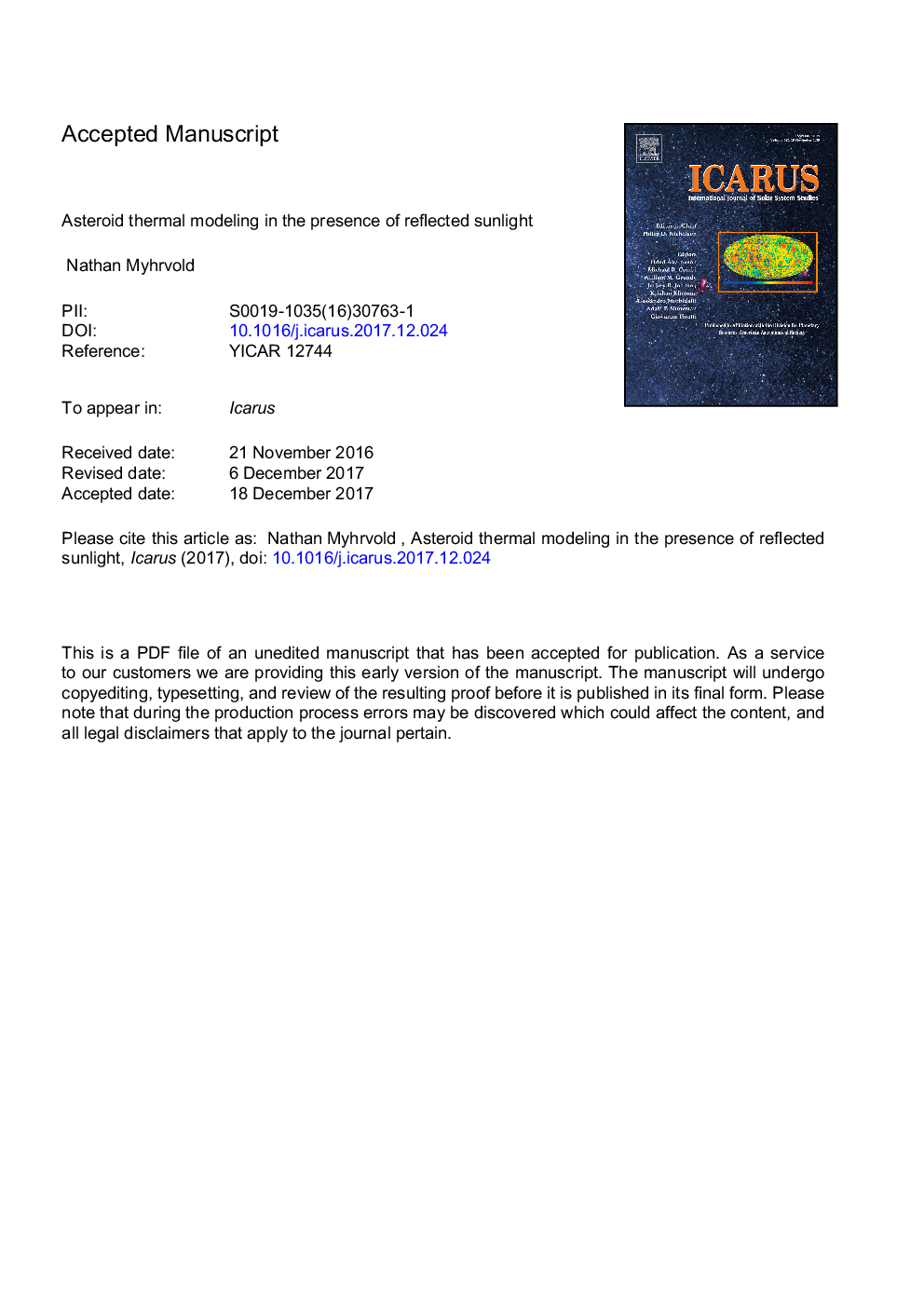| Article ID | Journal | Published Year | Pages | File Type |
|---|---|---|---|---|
| 8134416 | Icarus | 2018 | 49 Pages |
Abstract
A new derivation of simple asteroid thermal models is presented, investigating the need to account correctly for Kirchhoff's law of thermal radiation when IR observations contain substantial reflected sunlight. The framework applies to both the NEATM and related thermal models. A new parameterization of these models eliminates the dependence of thermal modeling on visible absolute magnitude H, which is not always available. Monte Carlo simulations are used to assess the potential impact of violating Kirchhoff's law on estimates of physical parameters such as diameter and IR albedo, with an emphasis on NEOWISE results. The NEOWISE papers use ten different models, applied to 12 different combinations of WISE data bands, in 47 different combinations. The most prevalent combinations are simulated and the accuracy of diameter estimates is found to be depend critically on the model and data band combination. In the best case of full thermal modeling of all four band the errors in an idealized model the 1Ï (68.27%) confidence interval is â5% to +6%, but this combination is just 1.9% of NEOWISE results. Other combinations representing 42% of the NEOWISE results have about twice the CI at â10% to +12%, before accounting for errors due to irregular shape or other real world effects that are not simulated. The model and data band combinations found for the majority of NEOWISE results have much larger systematic and random errors. Kirchhoff's law violation by NEOWISE models leads to errors in estimation accuracy that are strongest for asteroids with W1, W2 band emissivity ϵ12 in both the lowest (0.605â¤Ïµ12â¤0.780), and highest decile (0.969â¤Ïµ12â¤0.988), corresponding to the highest and lowest deciles of near-IR albedo pIR. Systematic accuracy error between deciles ranges from a low of 5% to as much as 45%, and there are also differences in the random errors. Kirchhoff's law effects also produce large errors in NEOWISE estimates of pIR, particularly for high values. IR observations of asteroids in bands that have substantial reflected sunlight can largely avoid these problems by adopting the Kirchhoff law compliant modeling framework presented here, which is conceptually straightforward and comes without computational cost.
Keywords
Related Topics
Physical Sciences and Engineering
Earth and Planetary Sciences
Space and Planetary Science
Authors
Nathan Myhrvold,
